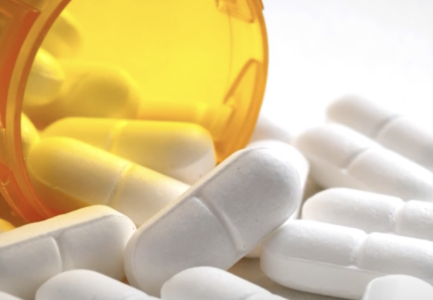Lifesaving medication and programs at risk? What the leaked Trump proposal means for communities
By
Veronica E.
- Replies 0
For families impacted by the opioid crisis, naloxone—often known by the brand name Narcan—has become a lifesaving tool.
This easy-to-use nasal spray can reverse an opioid overdose in just minutes, offering a second chance at life when every second counts.
But a new budget proposal from the Trump administration has raised concerns about whether this life-saving medication will remain accessible to the communities that need it most.
Despite prior pledges to expand overdose prevention efforts, a leaked draft of the administration’s federal budget suggests that funding could be scaled back significantly.
The cuts would affect some of the country’s most effective harm reduction programs, including those that support naloxone distribution.

The proposed cuts include a $56 million grant currently managed by the Substance Abuse and Mental Health Services Administration (SAMHSA).
This funding supports the First Responders-Comprehensive Addiction and Recovery Act (FR-CARA) program, which equips first responders and community organizations with naloxone and overdose response training.
In 2023, the program provided over 101,000 naloxone kits and trained nearly 77,000 people across the country.
For 2024, the target was even more ambitious: 130,000 kits and tens of thousands of additional trained responders.
Experts and public health leaders warn that these cuts could have serious consequences.
Regina LaBelle, director of the Addiction and Public Policy Initiative at Georgetown University, noted, "Naloxone saves lives every day, and naloxone distribution programs have been part of the federal government’s overdose response for over a decade."
She cautioned that eliminating funding for these programs could result in setbacks across the country.
Communities already benefiting from these efforts are particularly worried.
The Cherokee Nation has used FR-CARA grants to distribute 25,000 Narcan kits in Oklahoma.
"We know it has saved hundreds of lives," said Principal Chief Chuck Hoskin Jr., emphasizing that many local agencies couldn’t afford Narcan without federal support.
There has been progress: according to the CDC, overdose deaths in the US have dropped by about 23% since their peak in mid-2023.
Many credit expanded access to naloxone as a key factor in that decline.
But experts warn the fight is far from over—current overdose rates remain higher than pre-pandemic levels.
"I’m really afraid of going backwards," said LaBelle.
"It’s not just about getting rid of bureaucrats, it’s about undermining the entire system we’ve spent decades building up."
Alongside harm reduction, prevention remains a major focus.
US Health Secretary Robert F. Kennedy Jr., who has spoken publicly about his own past addiction, has emphasized the importance of community support, purpose, and prevention, particularly for young people.
While some of his ideas have sparked conversation, his message underscores that treating addiction takes more than medication alone.
If you or someone you love is at risk, staying informed and involved can make a difference. Here are a few simple ways to take action:
Read next: Surprising border busts: These everyday items outnumber fentanyl in seizures…How?

Has naloxone made a difference in your community? Do you think overdose prevention programs are receiving the support they deserve? Share your thoughts and experiences in the comments—your voice matters, and it just might help someone else.
This easy-to-use nasal spray can reverse an opioid overdose in just minutes, offering a second chance at life when every second counts.
But a new budget proposal from the Trump administration has raised concerns about whether this life-saving medication will remain accessible to the communities that need it most.
Despite prior pledges to expand overdose prevention efforts, a leaked draft of the administration’s federal budget suggests that funding could be scaled back significantly.
The cuts would affect some of the country’s most effective harm reduction programs, including those that support naloxone distribution.

Proposed funding cuts could impact access to naloxone, a medication used to reverse opioid overdoses and save lives in emergencies. Image Source: YouTube / CBS Local News.
Funding cuts raise questions
The proposed cuts include a $56 million grant currently managed by the Substance Abuse and Mental Health Services Administration (SAMHSA).
This funding supports the First Responders-Comprehensive Addiction and Recovery Act (FR-CARA) program, which equips first responders and community organizations with naloxone and overdose response training.
In 2023, the program provided over 101,000 naloxone kits and trained nearly 77,000 people across the country.
For 2024, the target was even more ambitious: 130,000 kits and tens of thousands of additional trained responders.
Advocates voice concern
Experts and public health leaders warn that these cuts could have serious consequences.
Regina LaBelle, director of the Addiction and Public Policy Initiative at Georgetown University, noted, "Naloxone saves lives every day, and naloxone distribution programs have been part of the federal government’s overdose response for over a decade."
She cautioned that eliminating funding for these programs could result in setbacks across the country.
Communities already benefiting from these efforts are particularly worried.
The Cherokee Nation has used FR-CARA grants to distribute 25,000 Narcan kits in Oklahoma.
"We know it has saved hundreds of lives," said Principal Chief Chuck Hoskin Jr., emphasizing that many local agencies couldn’t afford Narcan without federal support.
Also read: $300 million opioid deal reached—Walgreens settles federal case, denies liability
Where overdose numbers stand
There has been progress: according to the CDC, overdose deaths in the US have dropped by about 23% since their peak in mid-2023.
Many credit expanded access to naloxone as a key factor in that decline.
But experts warn the fight is far from over—current overdose rates remain higher than pre-pandemic levels.
"I’m really afraid of going backwards," said LaBelle.
"It’s not just about getting rid of bureaucrats, it’s about undermining the entire system we’ve spent decades building up."
Also read: The $7 billion Sackler & Purdue Pharma lawsuit exposed–Everything you need to know.
A broader message for prevention
Alongside harm reduction, prevention remains a major focus.
US Health Secretary Robert F. Kennedy Jr., who has spoken publicly about his own past addiction, has emphasized the importance of community support, purpose, and prevention, particularly for young people.
While some of his ideas have sparked conversation, his message underscores that treating addiction takes more than medication alone.
Also read: FDA gives the green light for revolutionary painkiller that changes everything and curbs addiction risk
What you can do
If you or someone you love is at risk, staying informed and involved can make a difference. Here are a few simple ways to take action:
- Stay updated on drug policy and health programs in your state
- Speak up if you support harm reduction—reach out to your local or state representatives
- Talk to your pharmacist about naloxone availability and how to use it
- Support each other—addiction affects families and communities of all kinds, and compassion goes a long way
Read next: Surprising border busts: These everyday items outnumber fentanyl in seizures…How?
Key Takeaways
- The Trump administration claims overdose prevention is a top priority, but a leaked budget proposal suggests it may cut about two dozen substance abuse prevention and treatment programs, including those that expand naloxone access.
- A $56 million annual naloxone grant through SAMHSA—which distributed more than 101,000 kits and trained nearly 77,000 people in 2023—is potentially on the chopping block.
- Advocates and affected communities, such as the Cherokee Nation, warn that losing funding for naloxone programs could stall or reverse recent progress in reducing overdose deaths, despite some recent declines in fatalities.
- No final decision on the budget has been made, but health experts are concerned that removing programs supporting naloxone access will undermine long-term public health efforts to address the overdose crisis in the United States.
Has naloxone made a difference in your community? Do you think overdose prevention programs are receiving the support they deserve? Share your thoughts and experiences in the comments—your voice matters, and it just might help someone else.






